#wool
Explore tagged Tumblr posts
Text

Today was Royal Easter Show Arts & Crafts competition drop off day. The RAS staff were all coo’ing over the teddy and petting the yarn. Wishing my efforts good luck in the judging!
#craft#crafts#maker#sewing#stitching#yarn#knit#knitting#crochet#spinning#handspun yarn#handspun#competition#competition entries#Sydney Royal Easter Show#competition entry#ooak bear#ooak amigurumi#amigurumi#animals#wool#yarn art#yarn crafts#yarnblr#yarnaddict#knitting yarn#yarnlove#crochet yarn#making yarn
25 notes
·
View notes
Text

You think “oh it would be useful to learn how to identify my thrifted yarn and clothing” and before you know it you’ve been recruited by fiber witches giving out their spells willy nilly, again
16K notes
·
View notes
Text
The thing I have never understood about people that oppose animal products is wool is literally hair of an animal, they have to be sheared to be comfortable, bees are basically unionized and will just leave if they aren’t taken care of, and we are already eating the meat of animals that produce leather, why waste parts of an animal. It just doesn’t make sense to me
Ayoo just to preempt the inevitable dumb takes we’re about to start seeing;
I am PRO-WOOL
I am PRO-LEATHER
I am PRO-BEES
Fuck the idea of replacing durable, sustainable animal products with cheap, flimsy plastic that doesn’t bio-degrade. Agave nectar and other artificial sweeteners are expensive, labor-intensive, and destroy the environment to be farmed.
Do not buy into pernicious marketing campaigns pushed by dickhead organizations trying to stay relevant, like PETA.
43K notes
·
View notes
Text
TO HELL WITH ALL CURRENT PROJECTS, I GOT SOFT MAIL:

Time to spin and knit me a peach!
My dearest @fossilfibers made the discord our own existential peach colorway since we try to see how many screaming peach stickers we can find when we get new friends lol
3K notes
·
View notes
Text

an accident by erin m. riley, 2020, wool & cotton, 82 × 100 inches
4K notes
·
View notes
Text

Finishedddddd!


Plying time!
164 notes
·
View notes
Text
Child's Sock from Egypt, c.250-350 CE: this colorful sock is nearly 1,700 years old

This sock was discovered during excavations in the ancient city of Oxyrhynchus. It was likely created for a child during the late Roman period, c.250-350 CE.
Similar-looking socks from late antiquity and the early Byzantine period have also been found at several other sites throughout Egypt; these socks often have colorful, striped patterns with divided toes, and they were crafted out of wool using a technique known as nålbinding.

Above: a similar child's sock from Antinoöpolis, in Egypt, c.250-350 CE
The sock depicted above was created during the same period, and it was found in a midden heap (an ancient rubbish pit) in the city of Antinoöpolis. A multispectral imaging analysis of this sock yielded some interesting results back in 2018, as this article explains:
... analysis revealed that the sock contained seven hues of wool yarn woven together in a meticulous, stripy pattern. Just three natural, plant-based dyes—madder roots for red, woad leaves for blue and weld flowers for yellow—were used to create the different color combinations featured on the sock, according to Joanne Dyer, lead author of the study.
In the paper, she and her co-authors explain that the imaging technique also revealed how the colors were mixed to create hues of green, purple and orange: In some cases, fibers of different colors were spun together; in others, individual yarns went through multiple dye baths.
Such intricacy is pretty impressive, considering that the ancient sock is both “tiny” and “fragile."
Given its size and orientation, the researchers believe it may have been worn on a child’s left foot.

Above: child's sock from Al Fayyum, Egypt, c.300-500 CE
The ancient Egyptians employed a single-needle looping technique, often referred to as nålbindning, to create their socks. Notably, the approach could be used to separate the big toe and four other toes in the sock—which just may have given life to the ever-controversial socks-and-sandals trend.
Sources & More Info:
Manchester Museum: Child's Sock from Oxyrhynchus
British Museum: Sock from Antinoupolis
Royal Ontario Museum: Sock from Al Fayyum
Smithsonian Magazine: 1,700-Year-Old Sock Spins Yarn About Ancient Egyptian Fashion
The Guardian: Imaging Tool Unravels Secrets of Child's Sock from Ancient Egypt
PLOS ONE Journal: A Multispectral Imaging Approach Integrated into the Study of Late Antique Textiles from Egypt
National Museums Scotland: The Lost Sock
#archaeology#artifact#history#anthropology#child's sock#ancient textiles#ancient egypt#roman egypt#fabric arts#knitting#fashion#naalebinding#art#classical antiquity#children in archaeology#natural dyes#wool#yarn#ancient clothing#children#roman#sewing#egyptology#cute little stripy socks
2K notes
·
View notes
Text
Maintaining the biodiversity of sheep is not just important for knitters and spinners, but for the health of the environment. Essentially, a sheep functions like a carbon sequestration system. Atmospheric carbon makes up 50 percent of wool's weight, and, unlike synthetic fabrics, wool is naturally biodegradable. When disposed of, wool acts like a fertilizer, slowly releasing valuable nutrients and carbon back into the soil. Wool fixed carbon in the topsoil rather than releasing it into the atmosphere. This process can help regenerate pastures, which sheep will graze. And sheep can help answer the problem of how to avoid far-flung fiber supply chains. Because sheep do well in such an extraordinary range of terrains, wool is a natural choice for people interested in rebuilding local systems of cloth manufacture. Certain breeds are more suited to certain atmospheric and geologic conditions than others, so preserving diversity also means preserving the geographic range in which sheep can flourish.
Sofi Thanhauser, Worn: A People’s History of Clothing
2K notes
·
View notes
Text
Made some little freaks


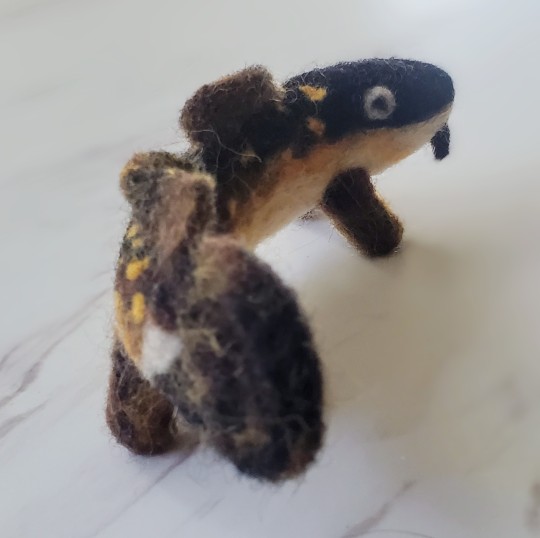
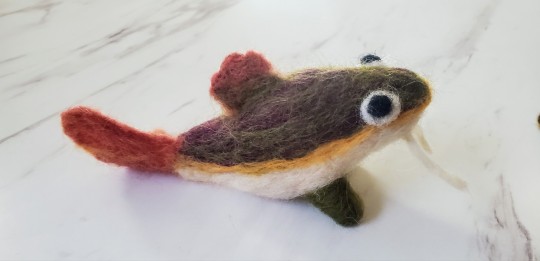

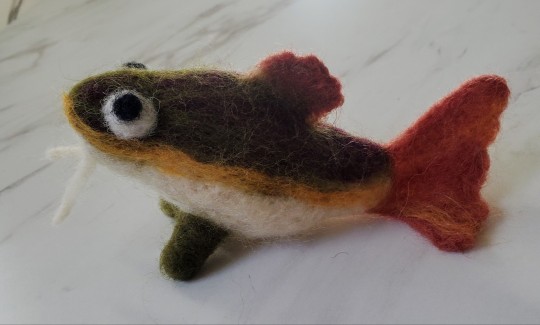
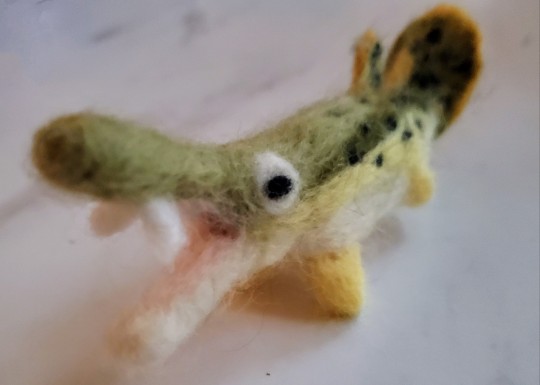

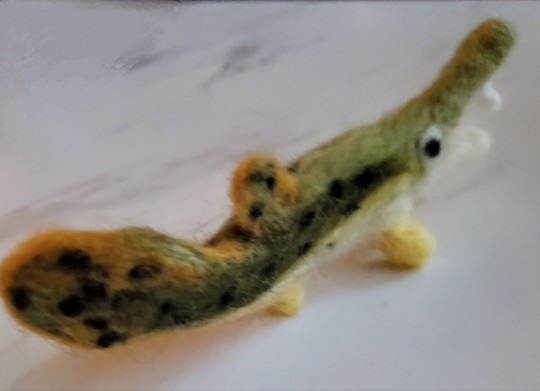
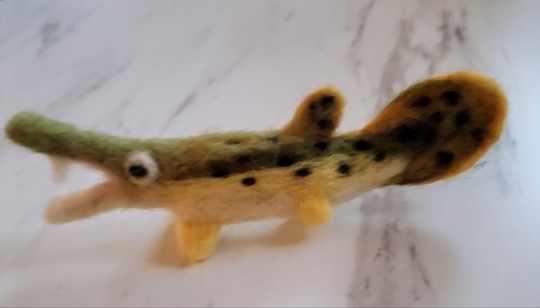
#burbot#redtail catfish#aligator gar#needle felting#felt art#wool#fishblr#fiber art#fish want me#fish fear me#kreechur croft
7K notes
·
View notes
Text

Hungry Faint - Natalia Leonova
Russian , b. 1983 -
Pastel on paper , 70 x 50 cm.
3K notes
·
View notes
Text


Riding Jacket
c.1835
Europe
LACMA
#riding habit#fashion history#historical fashion#1830s#1835#19th century#sportswear#victorian era#black#wool#velvet#europe#lacma
3K notes
·
View notes
Text



Wow, didn’t realise I hadn’t posted an update on this in a while. Anyway, the colourwork is completed & I’ve put a lifeline in before I start the ribbing. I am sooo close…..
#craft#crafts#wip#maker#wool#yarn#yarnblr#yarn crafts#yarnaddict#yarnlove#cowl#fashion#slow fashion#knitting#double knitting#hand knit#knitspiration#knit colourwork#colourwork#double knit#knit cowl#fashion cowl#mammoth cowl#mammoth#handhuntknits#hand knitted#knitted cowl#colourwork knitting#knit wip
3K notes
·
View notes
Text

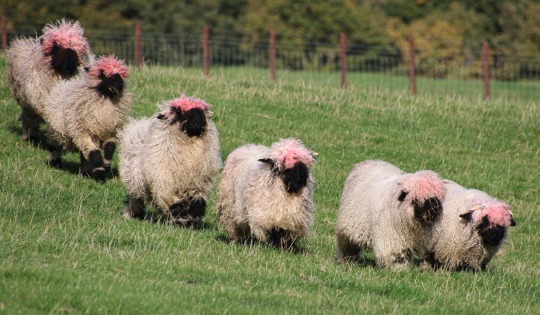

The Swiss Valais Blacknose have been rubbing themselves against the red feeder while eating and it managed to dye their wool pink.
28K notes
·
View notes
Text
everyone meet Pickles

Realized I never actually posted Pickles on here once he got his button eyes. Pickles is 100% hand knit on circular needles from a nice mystery fingering-weight merino yarn that was gifted to me. The only sewing on Pickles is the yarn holding his eyes on, everything else was knit into his form. 18 inches long and about 9 tall, Pickles took about 230 hours to create.
He is soft and traps heat well when held. Stuffed with nice high loft filling, he gives a solid and comforting feedback when hugged.
Pickles has NO pattern, but instead was inspired by/adapted from African flower crochet plush patterns using knitting techniques. (if you aren't a thread artist, imagine you heard a song and so you decided to write out sheet music for a completely different instrument)
#knitting#knit#yarn#fiber art#fibre art#fiber craft#stupidbeecandle#dinosaur#plushie#dino#steggy#stegosaurus#wool#soft#toy#art#myart
913 notes
·
View notes
Text






needle felted cat pet portraits!!
#pet portrait#needle felt#pets#cute cats#cats of tumblr#cat#catblr#artblr#wool art#artwork#art#needle felting#wool
660 notes
·
View notes